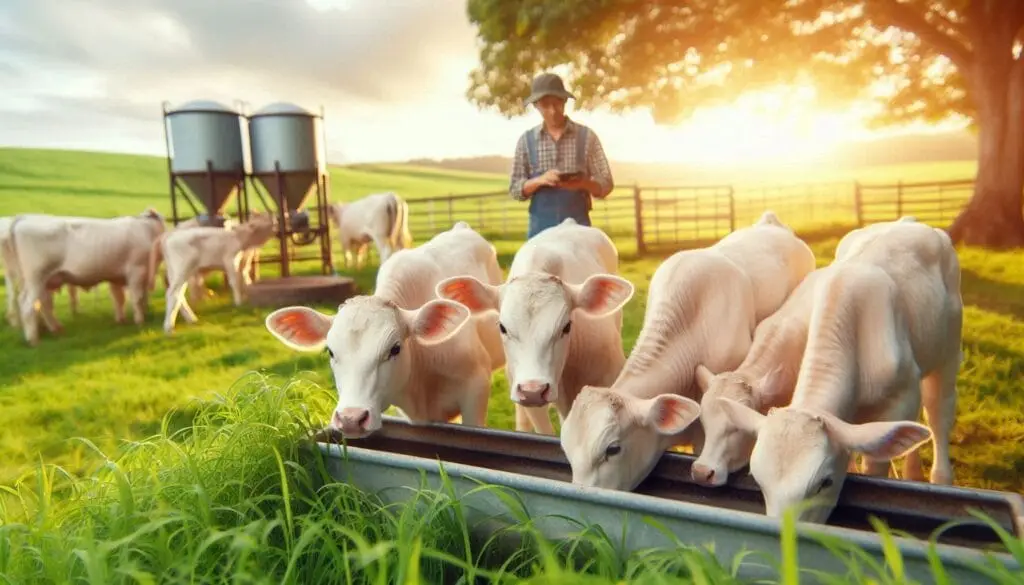Essential Heifer Management Practices

Understanding Heifers: Importance and Roles
Heifers are young female cattle that have not yet calved. They are typically raised for two primary purposes:
- Replacement Stock: Heifers replace older cows in the herd.
- Production: They contribute to milk or beef production once they reach maturity.
Effective management of heifers ensures that they grow into productive members of the herd. This involves careful attention to their nutritional needs, health care, and reproductive management.
Nutritional Requirements for Heifers
Proper nutrition is vital for heifer development. The nutritional needs of heifers differ from those of mature cows due to their growth requirements.
Energy and Protein Needs
- Energy: Heifers require a high-energy diet to support growth. A diet should contain at least 62% Total Digestible Nutrients (TDN).
- Protein: The protein content should be around 11% Crude Protein (CP) to promote optimal growth.
Feeding Strategies
- Separate Rations: Feed heifers separately from mature cows to prevent competition for resources.
- Balanced Diets: Ensure diets are balanced with adequate energy and protein levels to meet growth targets.
Monitoring Growth Rates
Regular monitoring of weight and size is essential to ensure heifers are on track for optimal growth:
- Target Weights: Aim for heifers to reach about 55% of their mature body weight by 13-15 months.
- Growth Charts: Utilize growth charts specific to breed standards to compare individual heifers against population averages.
Growth Monitoring Techniques
Monitoring the growth of heifers is crucial for ensuring they meet developmental milestones.
Key Indicators
- Weight Tracking: Regularly weigh heifers and compare their weights against established benchmarks.
- Body Condition Scoring (BCS): Assess body condition regularly to ensure proper fat cover without excessive weight gain.
Tools and Resources
Utilize tools such as customized growth charts that can help track individual progress based on specific herd goals.
Reproductive Management Strategies
Reproductive success in heifers is critical for long-term herd viability.
Breeding Age and Timing
- Optimal Breeding Age: Heifers should ideally be bred at around 11-14 months old.
- Calving Age: Aim for first calving by two years of age to maximize lifetime productivity.
Pregnancy Rates
First breeding season pregnancy rates can vary widely:
- Natural Breeding (NB): Rates range from 64% to 95%.
- Artificial Insemination (AI): First service conception rates typically range from 36% to 69%.
Tools for Success
- Estrous Synchronization: Implement synchronization protocols to improve breeding efficiency.
- Reproductive Tract Scoring: Use this scoring system to identify reproductively immature heifers before breeding.
Calving Management Practices
Effective management during calving can significantly impact calf survival rates and overall herd health.
Monitoring During Calving
- Close Observation: Monitor heifers closely during calving, ideally twice daily.
- Intervention Protocols: Be prepared to assist if calving does not progress within a reasonable timeframe.
Post-Calving Care
After calving, ensure that both the heifer and calf receive appropriate care:
- Provide adequate nutrition to support recovery and lactation.
- Monitor calf health closely during the first few weeks of life.
Health Care Considerations
Maintaining the health of heifers is paramount for their development and productivity.
Vaccination Programs
Implement vaccination schedules that protect against common diseases affecting young cattle.
Regular Health Checks
Conduct regular health assessments to identify any potential issues early on:
- Veterinary Visits: Schedule routine veterinary check-ups.
- Monitoring Behavior: Observe any changes in behavior or appetite that may indicate health problems.
Conclusion
Effective heifer management encompasses a range of practices aimed at optimizing growth, reproductive success, and overall health. By focusing on nutrition, growth monitoring, reproductive strategies, and health care, producers can ensure that their heifers develop into productive members of the herd. With careful planning and execution, raising healthy growing cattle can lead to increased profitability in both beef and dairy operations.
For more pearls of Vets Wisdom:
https://wiseias.com/partitioning-of-food-energy-within-animals/






Responses